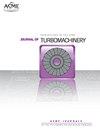从气动与气动声学角度评价离心风机叶轮/蜗壳关系
IF 3.1
3区 工程技术
Q3 ENGINEERING, MECHANICAL
引用次数: 0
摘要
重型离心风机要求高可靠性和一流的性能。此外,还经常遇到极端的条件和恶劣的环境,例如在造纸过程中,在钢铁或水泥厂或化学和石化工业中。因此,高性能重型工业风扇的设计需要强大而高效的解决方案。先前的工作表明,在蜗壳截止(舌)的特定位置有很高的气动和气动声学灵敏度。这种影响将进一步研究,不是通过直接改变切断的方向,而是通过改变叶轮相对于固定蜗壳的位置。通过对三个影响参数的数值研究进行了初步评估,从而允许使用低层人工网络对气动依赖性进行建模。随后,进行了广泛的实验研究,以验证空气动力学依赖性,并纳入有关气动声学性能的信息。得到的结果表明,工作点是决定最佳定位的关键因素,两种测试风机在质量上具有可比性。从气动声学的角度来看,确定的最佳配置不一定与观察到的空气动力学需求一致,因此需要仔细分析和合理的妥协,从而激励多目标优化过程。本文章由计算机程序翻译,如有差异,请以英文原文为准。
Assessment of the Impeller/Volute Relationship of Centrifugal Fans From an Aerodynamic and Aeroacoustic Perspective
Abstract Heavy-duty centrifugal fans require high reliability and first-class performance. Besides, extreme conditions and harsh environments are often encountered, such as in the papermaking process, in steel or cement plants or the chemical and petrochemical industry. Therefore, the design of high-performance heavy-duty industrial fans requires robust yet efficient solutions. The previous work indicates a high aerodynamic and aeroacoustic sensitivity concerning the specific position of the volute cutoff (tongue). This effect will be further investigated, not by directly changing the orientation of the cutoff, but by varying the position of the impeller relative to a fixed volute casing. The initial evaluation is done through a numerical study of three influencing parameters, which allow the aerodynamic dependencies to be modeled using low-layer artificial networks. Subsequently, extensive experimental studies were carried out to validate the aerodynamic dependencies and also to incorporate information on the aeroacoustic performance. The obtained results show that the operating point represents the key factor in determining the optimal positioning, with qualitatively comparable dependencies found for both tested fans. From an aeroacoustic point of view, the determined optimal configuration does not necessarily coincide with the observed aerodynamic desires, so careful analysis and a reasonable compromise are required, motivating for a multi-objective optimization process.
求助全文
通过发布文献求助,成功后即可免费获取论文全文。
去求助
来源期刊
CiteScore
4.70
自引率
11.80%
发文量
168
审稿时长
9 months
期刊介绍:
The Journal of Turbomachinery publishes archival-quality, peer-reviewed technical papers that advance the state-of-the-art of turbomachinery technology related to gas turbine engines. The broad scope of the subject matter includes the fluid dynamics, heat transfer, and aeromechanics technology associated with the design, analysis, modeling, testing, and performance of turbomachinery. Emphasis is placed on gas-path technologies associated with axial compressors, centrifugal compressors, and turbines.
Topics: Aerodynamic design, analysis, and test of compressor and turbine blading; Compressor stall, surge, and operability issues; Heat transfer phenomena and film cooling design, analysis, and testing in turbines; Aeromechanical instabilities; Computational fluid dynamics (CFD) applied to turbomachinery, boundary layer development, measurement techniques, and cavity and leaking flows.

 求助内容:
求助内容: 应助结果提醒方式:
应助结果提醒方式:


